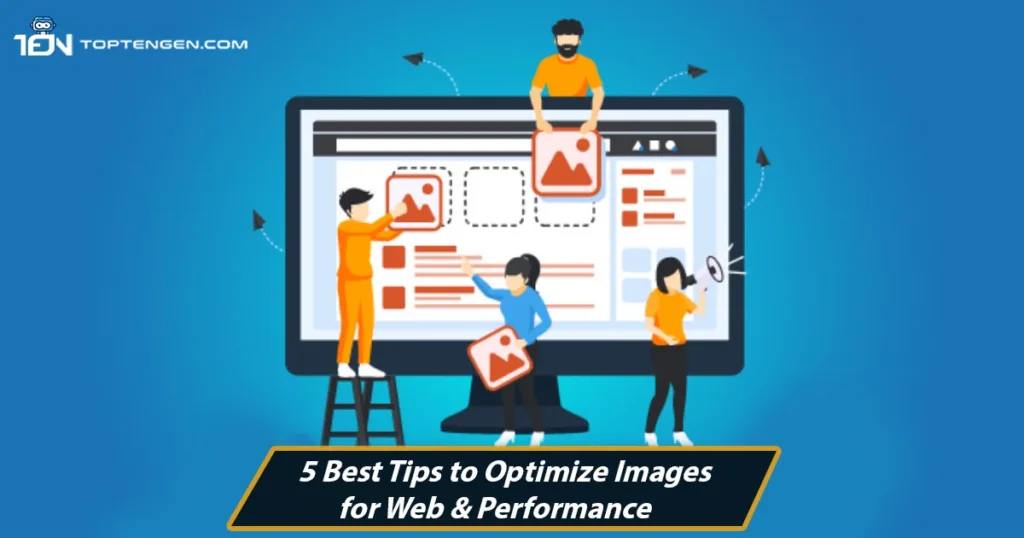Optimizing your images before uploading them to WordPress can significantly enhance your website’s speed. When people start a new blog, they often forget to optimize the images, and these large image files make your website slower. But there are several ways to fix it! You need to learn how to optimize your images for the web. This article will show you the 5 Best Tips To Optimize Images for Web and Performance without losing quality.
Check out Top 10 Website Design Trends to know more about its perks.
5 Best Tips To Optimize Images for Web and Performance

Optimizing images for the web can help your website in a number of ways. Below we’ve listed 5 Best Tips To Optimize Images for Web and Performance.
Choose the Right Format
Choose the appropriate image format based on the content and type of image and is one of the 5 Best Tips To Optimize Images for Web and Performance. Common formats include JPEG, PNG, and GIF.
JPEG: It is suitable for photographs and images with many colors. It also provides a good balance between quality and file size.
PNG: It is best for images that have transparent background and produce high-quality images but drawback is that it has a larger file size.
GIF: It mainly use for animations or simple graphics with limited colors. You can consider GIFs for small, animated elements on your website.
Resize Images
To improve your images for the web, a simple step is making them smaller before adding them to your website. Sometimes, images can be larger than they need to be, especially they’re from the fancy camera. For instance, your website is designed to display pictures as 500 by 500 squares, but the images you’re uploading are 1024.
All those extra pixels are just making the file bigger and slowing down your website with taking up a lot of space on your device. To fix this, you can resize your images before uploading them. This reduces the file size, helping your website load quicker and saving storage space on your devices for more images. For this you can use the tools like Photoshop, or Preview (for Macs), Paint (for Windows) or Canva to change the image size. Resize images is also one of the 5 Best Tips To Optimize Images for Web and Performance.
Compress Images
After finalizing your image, ensure that it is saved in the right format and properly cropped in the appropriate size. Compression is an additional optimizing step to consider before uploading the image. It significantly reduces the file size of the images without affecting its quality.
There are two primary compression methods: lossless and loosy. Lossless compression maintains the image quality before and after compression. On the other hand, lossy compression removes certain elements of the image in a way that’s often imperceptible to the human eye.
Optimize Alt Attributes
Alt attributes are like captions for images. They make websites more accessible. The alt attributes also enhance your websites SEO. Adding suitable alt attributes containing relevant keywords to your website’s images can enhance your search engine ranking. In fact, if you use alt attributes, its likely the most effective approach for getting your e-commerce products to appear in both Google image and web searches.
Use Content Delivery Network (CDN)
When we talk about 5 Best Tips To Optimize Images for Web and Performance, CDN is an important factor. A content delivery network is like a bunch of super-fast servers spread worldwide. They provide fast delivery of website content, including images, videos, CSS and JavaScript. When your WordPress website uses a CDN, it will copy your images from the main server to other servers worldwide. As the users visit your site, the images are retrieved from the server that are located to closest server. This way, CDN can increase page load speeds and help solve bandwidth issues.
Frequently Asked Questions
What is the best image format for WordPress?
What are 5 Best Tips To Optimize Images for Web and Performance?
1. Choose the Right Format
2. Resize Images
3. Compress Images
4. Optimize Alt Attributes
5. Use Content Delivery Network (CDN)
